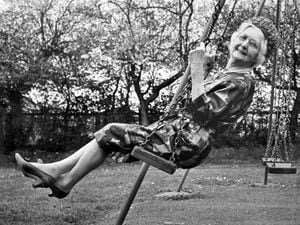Dozens of historic discoveries declared 'treasure' found in Shropshire in the last year
Metal-detecting is growing 'massively' in popularity, a detectorist reveals, as the county has thrown up a host of historic discoveries in the last year.
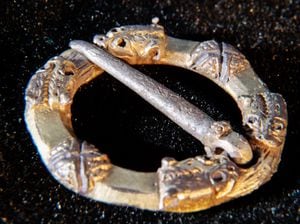
Treasure hunters and metal detectorists made 31 discoveries of treasure in Shropshire, Telford and Wrekin over the last year, according to new figures from the Ministry of Justice.
This was up from 18 the year before – and among 129 found in the area since records began in 1995 – while 908 finds were reported nationally, a 13 per cent increase on the year before.
Cai Antoney, from Market Drayton, runs the Noble Pursuits Metal Detecting group and leads a troop of members every week across pastures in-and-around North Shropshire.

Commenting on metal detecting as a hobby, Cai said: "It's something that's growing year on year and there's a constant influx of people coming in year on year. It's getting into people's heads a lot more."
This might be down to it becoming more mainstream in the media, Cai said, with documentaries such as Channel 5's Digging for Treasure with presenter Dan Walker showcasing the hobby.
But it could be down to the number of high profile finds coming from the area, Cai added, as he has noticed an increase in new people joining digs and making enquiries about where to start.
A Whixall monolith, which was discovered in July of last year, had a piece of Bronze Age artwork carved onto the side of the Permio-Triassic red sandstone block.
Discovered by James and Jasmine Dowley, the artwork was deemed to have national importance and was described by Timeline Auctions as the 'oldest piece of art ever discovered in Shropshire'.
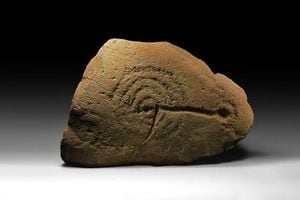
Bronze Age tools, including an axe-head, which were buried in land near Baschurch about 900BC, were declared as treasure last year after being discovered by two men taking part in an organised dig.
A report from the British Museum said that the hoard was relatively typical of small, late Bronze Age, mixed tool assemblage found in Shropshire and the Marches.
The Treasure Act, introduced in 1997, defines treasure as discoveries older than 300 years, this could include coins and prehistoric metallic objects that are at least 10 per cent precious metal such as gold or silver.
All potential treasure finds are processed by the British Museum, whose experts advise coroners on whether the find fits the definition of treasure.
If a coroner rules that it is treasure, both local and national museums are given the chance to acquire the pieces, and the finder will be paid a sum depending on the treasure's value.
Cai believes that the Elizabethan hawking ring and an early medieval gilded silver brooch found near Hodnet earlier this year, are likely to be declared treasure once they have been through the treasure process.
The silver ring was a hawking ring or 'vervel' and was engraved 'IO ('Iohannes' or John in Old English) Talbot at Grafton, most likely belonging to a member of the noble Grafton family of Shropshire.
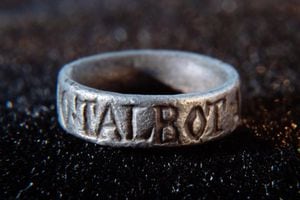
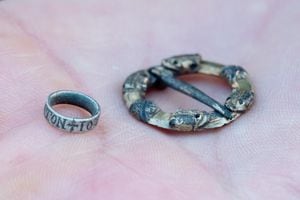
Cai believes that members of the group may have 20 to 30 potential 'treasure' finds that are working their way through the process, but this can take some time.
And with an influx of people taking up metal-detecting, this has a knock-on affect on the time it takes for pieces to be declared treasure.


